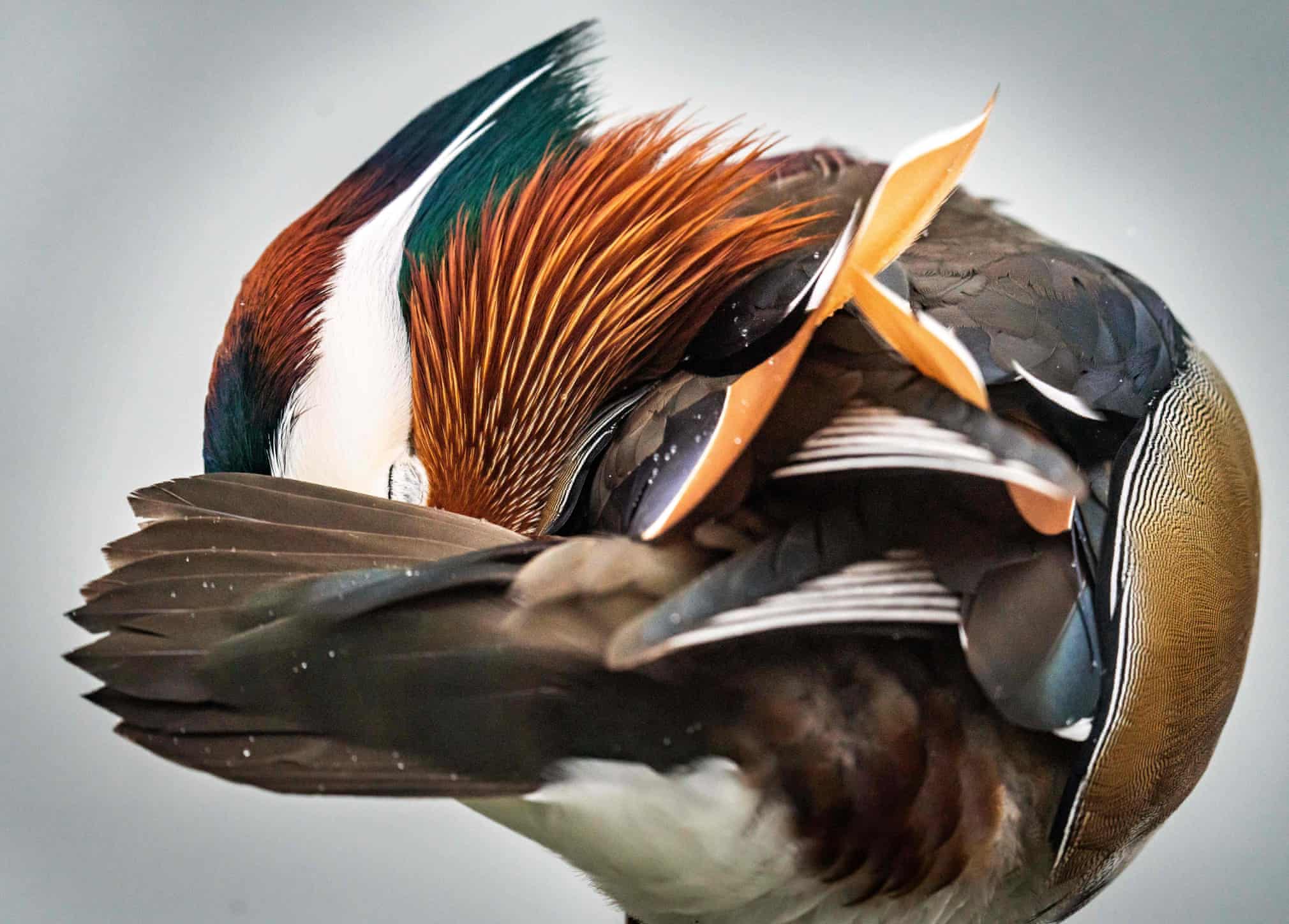
The week in wildlife
The week in wildlife – in pictures
The pick of the world’s best flora and fauna photos, including a plea for a crocodile trapped in a tyre
by Eric Hilaire
Grey wolf and raven in Yellowstone national park. Twenty-five years ago this month, wolves were reintroduced to Yellowstone, America’s first national park and an ecosystem dangerously out of whack due to the extirpation of its top predator. This monumental undertaking marked the first deliberate attempt to return a top-level carnivore to a large ecosystem. Now scientists are celebrating the wolves’ successful return from the brink of extinction as one of the greatest rewilding stories the world has ever seen
Photograph: Danita Delimont/Alamy

A wild Alaskan sea otter in Resurrection Bay off the port city of Seward in southern Alaska. Two sea otters will soon become residents at the National Sea Life Centre in Birmingham after they were rescued and cared for by staff at the Alaska Sealife Center in Seward. The two otters – whose species was once on the verge of extinction after being hunted for its thick, rich pelt in the 1800s – are being moved to the UK as part of a pioneering education and conservation project
Photograph: Jacob King/PA

Combat between spotted nutcracker in snow in the Alps in Italy
Photograph: Paolino Massimiliano Manuel/Alamy

Bar-headed geese, which migrate from Tibet and central Asia during winter, flock at Gharana wetland on the outskirts of Jammu, India
Photograph: Channi Anand/AP

Wild ibex on the slopes of Comares, Malaga in the Axarquía region of Andalucia in Spain
Photograph: The Studio Under The Wall/Alamy

A mandarin duck in Frankfurt, Germany
Photograph: Frank Rumpenhorst/dpa/AFP via Getty Images

The white-tailed deer, also known as the whitetail or Virginia deer, in Wisconsin, US
Photograph: Karel Bock/Alamy

A shark is hauled into the hold of a Spanish longliner targeting swordfish in the South Atlantic Ocean. During September and October 2019 Greenpeace investigator Sophie Cooke and photographer Tommy Trenchard spent a month at sea on the Greenpeace ship Arctic Sunrise observing the hidden practices behind many of the deaths of 100 million sharks every year in the mid-Atlantic
Photograph: Tommy Trenchard/Greenpeace

John Creighton, the founder of Wombat Care Bundanoon, looks for traces of wombats in a burrow in a burnt-out forest in New South Wales, Australia. Australians are being asked to join a mass citizen science programme to photograph how the nation’s habitats and wildlife are responding in the wake of the unprecedented bushfire crisis
Photograph: Thomas Peter/Reuters

A yellowhammer in Wicklow, Ireland
Photograph: Holly Grogan/Alamy

A tiny Dungeness crab larva swims next to air bubbles in a lab container at the NOAA Fisheries’ Northwest Fisheries Science Center in Mukilteo, Washington, US. The Pacific Ocean is becoming so acidic it is starting to dissolve the shells of a key species of crab, according to a new US study. Scientists found that the Dungeness crab, one of the most valuable species for recreational and commercial fisheries, is starting to weaken as its larvae are affected by rising ocean acidity
Photograph: Elaine Thompson/AP

One of an adult pair of Eurasian beavers after being released on the National Trust Holnicote estate on Exmoor in Somerset. The male and female were released on the estate to help with flood management and improve biodiversity
Photograph: Ben Birchall/PA

Picture released by Bolivia’s natural history museum showing one of three “glass frogs”, which have transparent belly skin, found in early January at the Sehuencas national park in Bolivia.
Photograph: Oliver Quinteros/Natural History Museum "Alcide d/AFP via Getty Images

,
Northern royal albatrosses at the Royal Albatross Centre in Taiaroa Head, Dunedin, New Zealand. In a trial using technology shared by New Zealand and France169 albatrosses were fitted with radar detection tags to spot illegal fishing in November 2018 and released to the south of the Indian Ocean
Photograph: Guo Lei/Xinhua/Alamy

The Australian Defence Force flew a team of experts to Kosciuszko national park to rescue the endangered southern corroboree frog after protective enclosures were destroyed by bushfire
Photograph: Australian Defence Force

The “golden wildebeest” is a novel species derived through the ranching and selective breeding of the common or blue wildebeest (Connochaetes taurinus), much darker animals whose coats are typically a deep slate or bluish grey colour. Moves to allow more intensive genetic manipulation of several wildlife species in South Africa have raised the concern of scientists around irreversible genetic pollution of the original wild species
Photograph: Prof Graham Kerley/Nelson Mandela University

White pelicans, one of the largest birds from Canada and the US, are seen at the shore of the Chapala lagoon in Cojumatlán, Mexico. White pelicans travel thousands of kilometres migrating from the low temperatures of North America
Photograph: Ulises Ruiz/AFP via Getty Images

A crocodile swims with a motorcycle tyre stuck around its neck in the Palu river in Palu, Indonesia. According to media reports, the Indonesian Natural Resources Conservation Agency announced a reward for anyone who could rescue the animal. The tyre has been stuck around the crocodile’s neck since the reptile was first spotted in September 2016
Photograph: Opan Bustan/EPA

A picture taken with a drone shows coastal trees casting shadows on the River Tisza at Tiszakeszi, Hungary. In the night of 30 January 2000, a dam at the gold mining company Aurul, holding contaminated waters, burst and spilled 100,000 cubic metres of cyanide-contaminated water. The polluted waters spilled into the River Somes and reached the Tisza and then the Danube, killing large numbers of fish in Hungary, Serbia and Romania. The spill has been called the worst environmental disaster in Europe since Chernobyl. The Hungarian government on 16 July 2000 declared 1 February as the memorial day for Tisza wildlife
Photograph: Zsolt Czeglédi/EPA

China’s Yixi Talk (Get Inspired) is the equivalent to Ted Talks and they just released a talk from Photographers Against Wildlife Crime co-founder Britta Jaschinski, which she gave in Guangzhou in December, following the launch of the bilingual English-Chinese version.
Photograph: Britta Jaschinski/Photographers Against Wildlife Crime